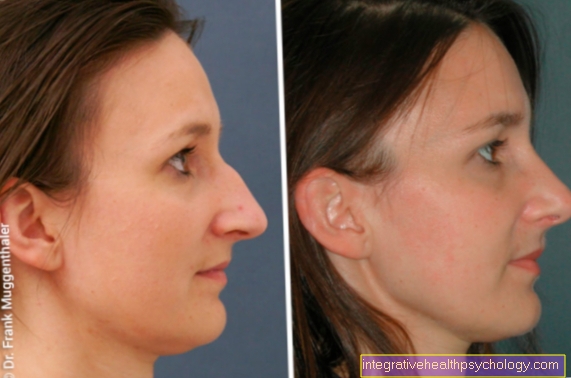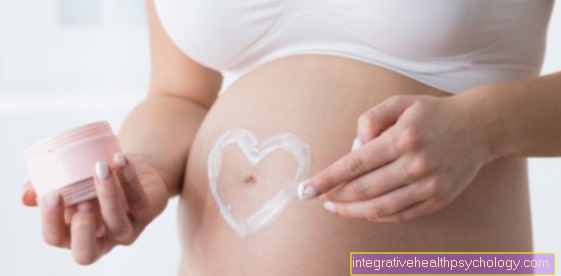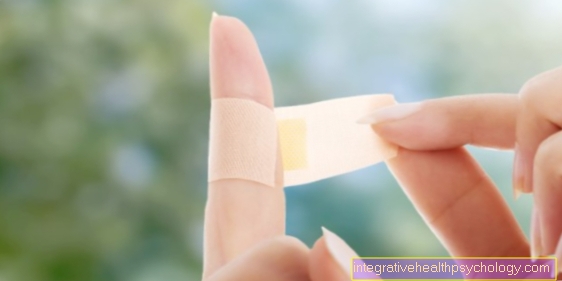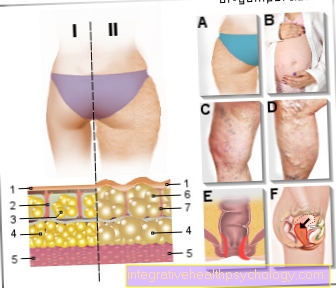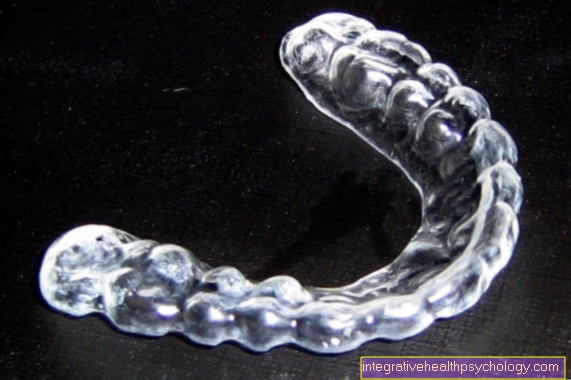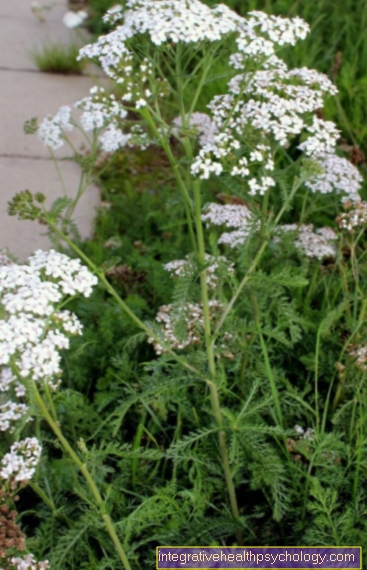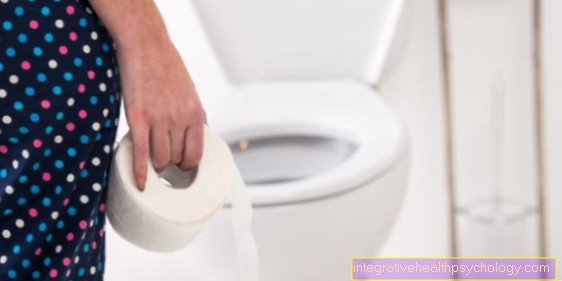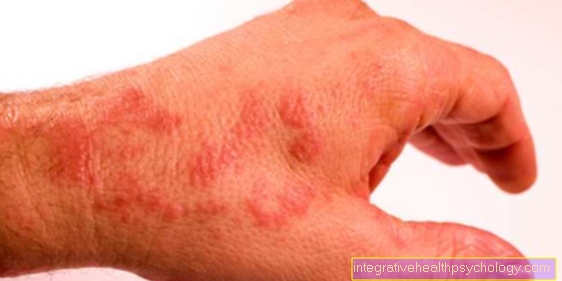This is how you can prevent a sun allergy
introduction
More than one in ten people cannot enjoy summer and the sun to the fullest due to a sun allergy. The UV light quickly causes allergic reactions on the skin, the affected areas become red and itchy. Especially at the beginning of summer, the annoying skin reaction occurs more intensely and many people concerned wonder how a sun allergy can be prevented. There are a number of prophylactic measures that can be taken before sunbathing, but ultimately only a dermatologist can clarify whether you actually suffer from a sun allergy.

These measures can prevent
There are several ways to prevent sun allergies:
- slowly getting used to sunlight
- Sun protection
- suncream
- Medicines, vitamin supplements and calcium
- Schüssler salts and homeopathic remedies
- Phototherapy
- Photochemotherapy
Sunscreen and sunscreen
Proper sun protection is the best measure to prevent sun allergies. Allergic people should apply sunscreen with a sun protection factor of at least 50 before going into the sun. Regular re-creaming extends the protection. Even in the shade, in the water or under parasols, you are not protected from the intense rays of the sun, which is why it is a misconception that you can only develop a sun allergy in the blazing sun.
Even clothing does not offer complete protection against UV radiation, but there are now detergents available that make textiles more impermeable to the sun after washing them several times. Black clothing also lets less sun rays through to the skin. Nevertheless, the best sun protection is still a good sunscreen with a high sun protection factor and avoiding the blazing sun, especially at noon, if possible.
What you might also be interested in on this topic:
- This is how you can prevent sunburn
These drugs prevent it
There are a number of medications that can be taken to prevent sun allergies. These include calcium, vitamin D3, beta-carotene and antihistamines. These supplements can be useful for people who have severe skin rashes when exposed to sunlight. It should be noted that the preventive intake should be started weeks before the skin is increasingly exposed to the sun's rays. Since some preparations interact with other drugs or alcohol, a doctor or pharmacist should be consulted before taking them.
Calcium weakens the allergic reaction to sun rays by binding and breaking down the inflammatory messenger substance histamine. Vitamin D3 can also help with sun allergies, as people who are sensitive to light are usually deficient in this vitamin. Beta-carotene is a natural plant pigment that is found primarily in carrots, spinach and kale. This is a precursor of vitamin A, which is deposited in the skin and protects it from dangerous UV radiation.
Antihistamines are antiallergic drugs that prevent inflammatory messenger substances from being released in the body. Antihistamines can not only be taken for acute allergic complaints, but also as a preventative measure for known sun allergies. In general, these preparations are well tolerated, but tiredness can occur. Therefore, it is best to take these drugs in the evening.
Read more on this topic at:
- Antihistamines
- Vitamin D
Calcium helps so well
Calcium is a great way to protect yourself from sun allergies. However, the mineral should be taken several weeks before vacation or increased exposure to the sun. In the case of a sun allergy, the body reacts allergically to the UV-A waves contained in the sunlight and subsequently releases the tissue hormone histamine. Histamine acts as a messenger substance for the immune system and leads to an inflammatory reaction: the skin swells, itches and reddens. Calcium helps with allergic skin reactions because it binds and breaks down the histamine in the body.
Calcium preparations are very effective in treating photodermatoses and skin reactions caused by allergies, which is why their use is recommended to prevent sun allergies. Calcium is given in the form of tablets. The dosage is usually 1000 mg. When taking it, it should be ensured that there is no overdose, otherwise kidney stones, for example, can form as a side effect. It is best to discuss the exact intake with a doctor or pharmacist.
homeopathy
Homeopathic remedies can also help prevent sun allergies. However, this is by no means an alternative to a sun cream with a high sun protection factor! The use of homeopathic remedies should begin about two weeks before increased exposure to the sun. Preparations with Muriaticum acidum or Calcium carbonicum help ensure that the skin reaction is milder or does not occur at all in the case of a sun allergy.
Read more on this topic at:
- Calcium carbonicum
- Homeopathic medicines
These vitamins can help
Certain vitamins can help prevent sun allergies. Vitamin D is formed in the skin with the help of sunlight and has a protective effect against skin diseases and allergies. People who are allergic to the sun often have low levels of vitamin D in their blood, and the vitamin deficiency exacerbates the allergic symptoms. This is a vicious circle because, on the one hand, the production of vitamin D in the body is dependent on sunlight, and on the other hand, sunlight leads to skin reactions in allergy sufferers. As a result, sun allergy sufferers consciously avoid the sun and thus cannot produce enough vitamin D. It is therefore best to have a doctor determine your vitamin D status in the blood if you are allergic to the sun. If there is a deficiency, it is possible to substitute vitamin D in the form of capsules.
Vitamin A also has a protective effect on the skin and ensures that skin changes caused by a sun allergy regress more quickly. As a preventive measure, vitamin A can be taken several weeks before the start of intense sun exposure. To avoid overdosing, the vitamin status should also be tested here.
Read more on this topic at:
- Vitamin preparations
- Vitamin A
- Vitamin D
These Schüssler salts can prevent
Schüssler salts can help with a sun allergy and have a preventive effect. The intake must be started weeks before the intensive sun exposure. These Schüssler salts can help prepare the skin for the sun: No. 3 Ferrum phosphoricum, No. 6 Kalium sulfuricum, No. 8 sodium chloratum, No. 10 sodium sulfuricum. Each of the tablets is taken three times a day.
Read more on this topic at:
- Schüssler salts
- Schüssler salt no.6
- Schüssler Salt No. 10
Home remedies
The best home remedy for sun allergy prevention is to slowly get used to UV rays. If you start sunbathing slowly and extend the duration of sun exposure for several minutes each day, there is a good chance that an allergic reaction will not occur. Especially at the beginning of the vacation or in the first warm spring days, sun allergy sufferers should be careful, as the skin is still in hibernation and is not used to the sun's rays. Sunscreen with UV protection is an absolute must before sunbathing. It should not be forgotten that UV rays can also penetrate through window glass. The same applies to stays in the shade, here too you have to put some lotion on, as the UV rays are reflected from the floor and are therefore omnipresent.
Antioxidants
If you are allergic to the sun, combining a sunscreen with an antioxidant such as vitamin C or vitamin E can be useful. Antioxidants protect the skin from free radical damage caused by sunlight. In most cases, these substances are contained directly in the sun cream and do not have to be added separately.
Getting used to
For most people, the sun allergy mainly occurs at the beginning of sun exposure, i.e. in the first warm days or at the beginning of the summer vacation. Often it is precisely those parts of the body that are affected by the allergic reaction that are seldom exposed to the sun's rays (for example the inside of the forearms, décolleté and shoulders). Getting used to the sun slowly can help prevent sun allergies. That is why people with sensitive skin are advised not to go into the blazing sun straight away, but to stay in the shade first. Gradually, the time in the sun can then be extended.
Phototherapy
For people who suffer from a strong sun allergy, the use of so-called phototherapy (also as light hardening) by the dermatologist can be useful. The doctor irradiates the skin with UV-B radiation daily for several weeks for a short time. The light therapy is carried out in strictly controlled doses, which are increased over time. As a result, the skin slowly gets used to the sun and the allergic reaction is mitigated or completely prevented.
Photochemotherapy
In the case of very severe allergies or extremely light-sensitive people, the doctor can intensify the phototherapy by combining it with the administration of certain drugs that suppress the immune system. This relatively new treatment approach is called photochemotherapy and is only used when none of the previously mentioned therapies have shown any effect.

